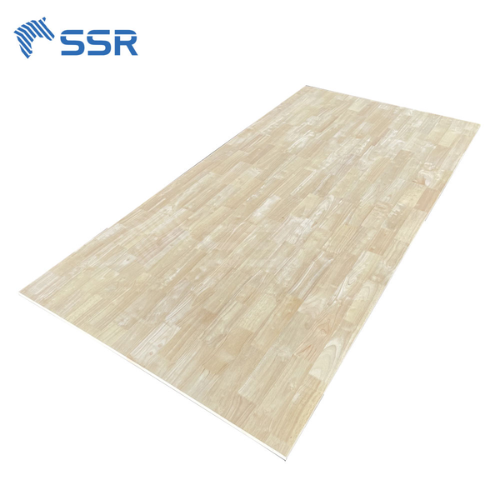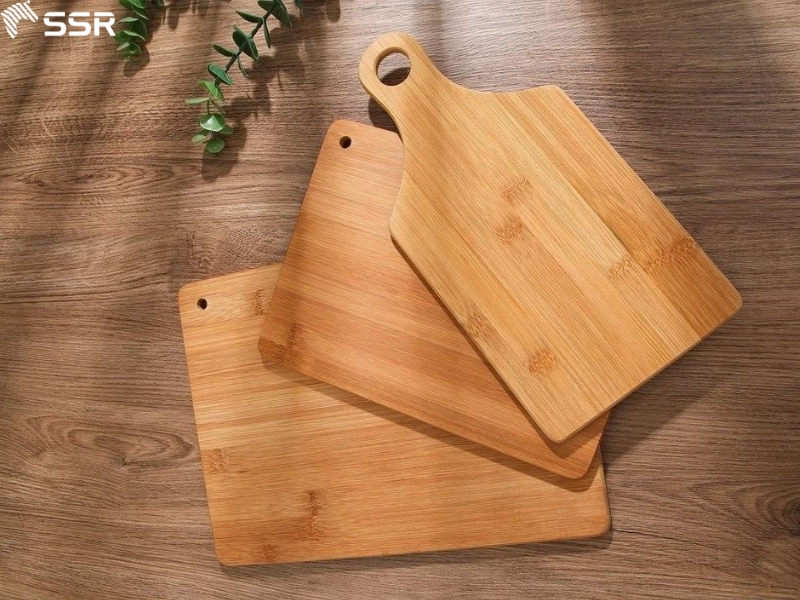NEWS
Plywood is a popular construction material today. Discover the advantages and disadvantages of this material along with the practical experience of consumers in the US and Ho Chi Minh City.
Advantages of plywood
Cost savings and ease of construction: Compared to natural wood or other high-end construction materials, plywood helps contractors and investors save significant costs. In the US, a construction contractor in California shared:
“We use plywood for frames and wooden surfaces in the house. Plywood is easy to cut, join and is extremely sturdy when installed” (According to the page: Construction review online).
In Ho Chi Minh City, customers also appreciate the flexibility of plywood and widely use it to produce kitchen cabinets and doors thanks to its ability to be easily cut, joined, and customized according to design needs.
Disadvantages of plywood
Subject to environmental impacts: Plywood has poor water and weather resistance in harsh environments if not properly treated. In a hot and humid tropical climate like Ho Chi Minh City, some customers say that plywood is susceptible to deterioration if not properly maintained.
According to an article in the Construction Newspaper of Vietnam, experts warn that in conditions of prolonged rain and humidity, if you do not choose a type of plywood that is waterproof, the product may swell or peel after a short period of use.
Termite resistance is also a factor to consider, especially in humid areas. A survey from Vietnam News showed that many projects using plywood in the Mekong Delta region have encountered termite problems after a few years of use, causing maintenance costs to increase.
Selection and preservation

Plywood in construction
To maximize the advantages of plywood, it is necessary to choose the type of plywood that is suitable for the intended use and environmental conditions. In the US, water-resistant and termite-resistant plywood is commonly used in outdoor projects, especially in areas with high humidity or near the sea, such as Florida and California. Water-resistant plywood is often used for roofing, flooring, and outdoor structures because of its weather resistance. This is supported by national and local building codes, which include regulations on materials used in high-humidity environments. In Ho Chi Minh City, the use of chemically treated termite-resistant plywood to increase durability is extremely necessary. In hot and humid conditions, termites and high humidity can easily damage plywood if not properly protected. This is a practical and common example in the construction and interior design industries in similar climates.
Besides the many benefits of using plywood in construction, from cost optimization to flexibility in construction, choosing the right type of plywood and careful maintenance and care will help avoid risks from the outside and the environment.
Currently, many types of high-quality plywood are popular in the US and Vietnamese markets. In the US, marine plywood and structural plywood are prominent and suitable for outdoor projects and construction structures. In Vietnam, boiling water resistant and film faced plywood are popular in construction projects, and high-humidity areas, and there are also anti-termite plywood as well as 3-layer and 5-layer plywood widely used in many applications.
Featured Products
Acacia Wood Butcher Block Countertops Supplier
Specifications:
- Species: Acacia
- Moisture: < 12%
- Wood Stave (Length): 150-400 mm
- Wood Stave (Width): 30-80 mm
- Length & Width tolerance: 0/+3 mm
- Thickness tolerance: +/- 0.2 mm
- Glue: D4
- Quality: AB, BC or customized
- Surface finish: Sanding 180-240 grit, 2 faces
Rubberwood Finger Joint Board Supplier
- Species: Rubberwood
- Moisture: <12 %
- Wood Stave (Length): 150-600 mm
- Wood Stave (Width): 35-80 mm
- Length & Width tolerance: 0/+3 mm
- Thickness tolerance: +/- 0.2 mm
- Glue: D4
- Quality: AA, AC or customized
- Surface Finish: sanding 240-320 grit, 2 faces
Birch Butcher Block Countertop Supplier
Specifications:
- Species: Birch
- Moisture: < 12%
- Wood Stave (Length): 150-400 mm
- Wood Stave (Width): 20-80 mm
- Length & Width tolerance: 0/+3 mm
- Thickness tolerance: +/- 0.2 mm
- Glue: D4
- Quality: AB, AC or customized
- Surface finish: Sanding 180-240 grit, 2 faces.
Featured News
Related News
Bamboo Cutting Board Tips for Distributors – SSR VINA
Bamboo has become a popular alternative to traditional hardwoods when it comes to kitchen cutting boards. But is it really a good choice for your kitchen? In this guide, we’ll cover everything from the benefits and downsides to care instructions, environmental impact, and FAQs. What is a Bamboo Cutting Board? A bamboo cutting board is […]

Biomass Energy: The Natural Powerhouse of Renewable Energy
In the search for sustainable energy solutions, biomass stands out as one of the most promising alternatives to fossil fuels. But what exactly is biomass, and why is it gaining attention around the world? Let’s explore how this natural energy source works, where it’s used, and what the future holds. What Is Biomass? Biomass refers […]








 Tháng 10 1, 2024
Tháng 10 1, 2024 | SSR
| SSR




